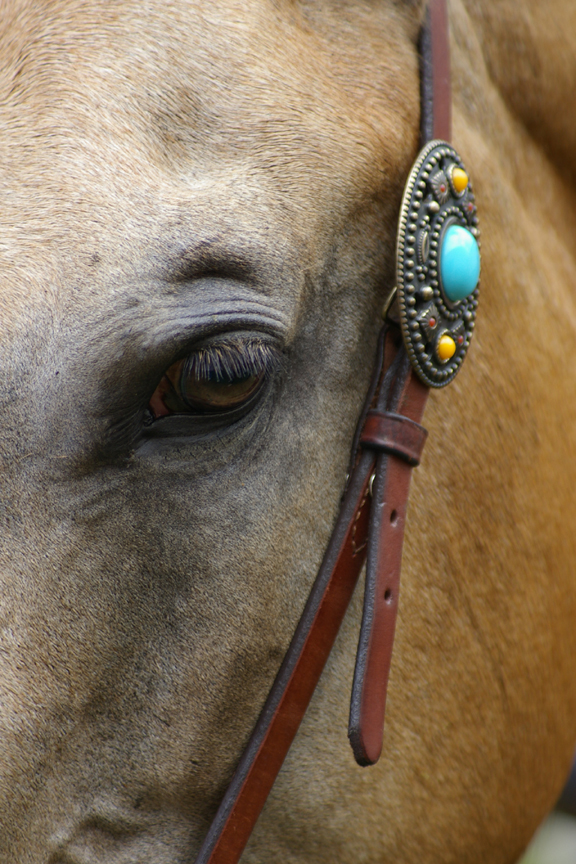
Defining ‘Natural’
In light of the viral western pleasure video going around, Catherine Ford reflects on how we define “natural.”

Pamela/Flickr/CC
The internet horse world has been in a frenzy over the release of this video showing one round of the Western Pleasure Class at Quarter Horse Congress.
Comments ranged from, “Those horses look lame” to “You people don’t understand anything about western” all the way over to “Abuse! Those poor horses are terribly abused.”
The most common theme was that the horses looked unnatural.
Out riding my horse Czech in the pasture this morning, I got to thinking on just what natural means. How far back do we go before we agree that a certain time and place is normal for all horses? Are we basing everything on the mustang model? Even mustangs are adapted from the horses that came earlier than them. Where does it start?
If natural is eating grass all day, over thousands of changing acres, barefoot, and killed by predators and each other over breeding or territory disputes, how exactly do we accomplish replicating that with our sport horses?
I was riding Czech on a totally loose rein, some would say “naturally” — but I promise you, toting me and my tack around a field probably wasn’t what Czech would do as a wild horse. At least not with the shoes his feet need to stay sound, or with a belly full of high-quality feed that gives him a better chance at a longer lifespan, and definitely not as a gelding.
I’m a person who cares about eating somewhat well; should I go back to a “natural” life and eat raw meat? Scavenge for food? Is that the measure of natural?
Natural isn’t possible. We as humans have changed over years to no longer need an appendix for raw meat, and some of our horses have changed to be better-suited as pleasure horses.
So the ongoing argument that all western pleasure movement is unnatural is dead. Racing isn’t natural and neither is jumping; no matter how many times you want to tell me that your horse does dressage movements at will under saddle in that arena, dressage isn’t purely natural either. If it was, it wouldn’t take so long to teach a horse to lift its back.
The other assumption is that it takes abuse to get a horse to perform this way. However, there is abuse in any animal industry and any horse discipline — some more than others, but I wouldn’t just assume that it took abuse to get compliance.
To my eye, the western pleasure horses still look strange and dull — I personally would never choose to ride this type of horse or this type of event. But before we label anything “unnatural,” we need to look at our definition of the word and how we’ve changed the horse, for better or worse.
About Catherine: I rode 3-day when I was younger until a bad fall broke my back and I gave up riding for 15 years. As an adult I came back into horses with my five very young children (including a set of triplets) in tow and immediately fell in love with the Off-Track Thoroughbred. Our small family farm is home to two OTTBs that I do hunter jumpers with and one Welsh pony that my children are learning to ride.
Read more of Catherine’s writing at horsesofsevenhearts.blogspot.com.







Leave a Comment